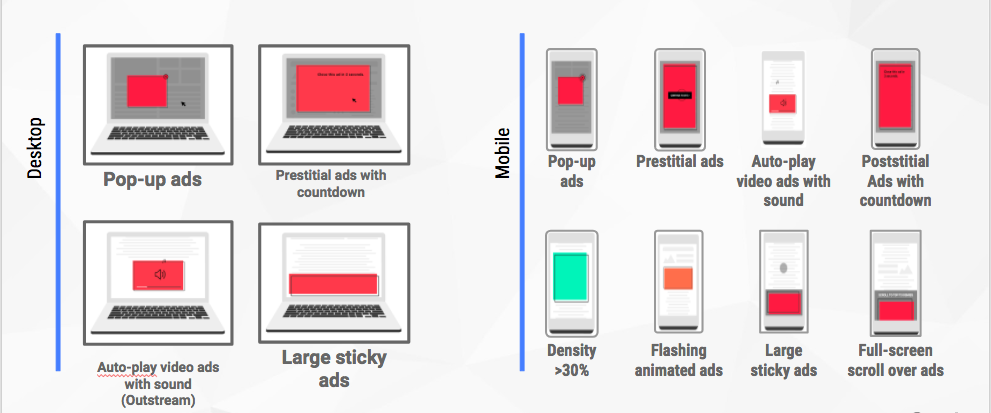For an in-depth discussion of Google new Chrome ad blocker, make sure to tune into episode 2 of DANcast, SearchStar’s monthly Digital Advertising News Podcast. Listen and subscribe here...
Google’s announcement, last year, that it was launching an ad blocker raised a few eyebrows among both publishers and advertisers.
Built into Chrome - the world’s most popular internet browser - everyone’s first thoughts were for their ad revenue, as well as a certain amount of confusion.
Well, earlier this month - February 15th to be precise - Google finally released its ad blocker upon the world.
But what does it mean for publishers and advertisers, and should you be scared for your revenues in its wake?
What is Google’s Ad Blocker?
Ad blockers have been worrying advertisers and publishers for some time now. It has been predicted that by the end of 2018, 30% of all internet users will be using one.
That’s a clear threat to ad revenues.
Developed alongside the Coalition for Better Ads, Google’s ad blocking software is a little different from the usual catch-all third party blockers. It won’t block all advertising (Google’s main source of revenue).

Instead, it’ll tackle the advertising that Google considers intrusive to user experience. That means if you’ve been running full-page ads, pop-up ads, video ads that autoplay sound or ads with a countdown, then you’re probably in Google’s crosshairs.
If your advertising doesn’t meet these standards it isn’t just one ad unit that will fall, everything on that site will be blocked by Chrome until they comply.
Sounds Scary. What Does it Really Mean?
On the face of it, Google launching an ad blocker sounds like a recipe for diminishing ad revenues. But that wouldn’t make sense - Google makes the majority of its revenue from advertising.
The correlation between irrelevant, intrusive advertising and increasing use of ad blockers is well known to everyone, Google included (naturally).
By filtering out such offensively intrusive advertising, Google is actually fighting back against third-party ad blockers. In reality, the release of Google’s ad blocker is a move to force publishers to sort out the appearance and functionality of their monetised content (as well as what they monetise).
What Google hopes is that by introducing its own ad blocker it will force publishers to improve user experience and advertising standards. This, in turn, will precipitate a reduction in the overall use of ad blocking.
Have We Seen An Impact?
Interestingly, we haven’t fielded any questions about the new blocker. We regularly keep our URL blacklist topped up and accurate, meaning that the advertising real estate we’re buying only appears with the highest quality publishers.
As long as you’re sure that your advertising is appearing on reputable sites, there’s likely nothing to worry about. In fact, Google’s ad blocker is likely a good thing for your revenues in the long term.
With publishers cleaning up their act, it’s likely that fewer people will download third-party software solutions. The idea being that should that happen, impressions will increase with revenues not far behind.
Whether Google should be given room to wield such power over the industry it makes its money from is another question entirely. It's certainly one to watch.
For an in-depth discussion of Google new Chrome ad blocker, make sure to tune into episode 2 of DANcast, SearchStar’s monthly Digital Advertising News Podcast. Listen and subscribe here >>>